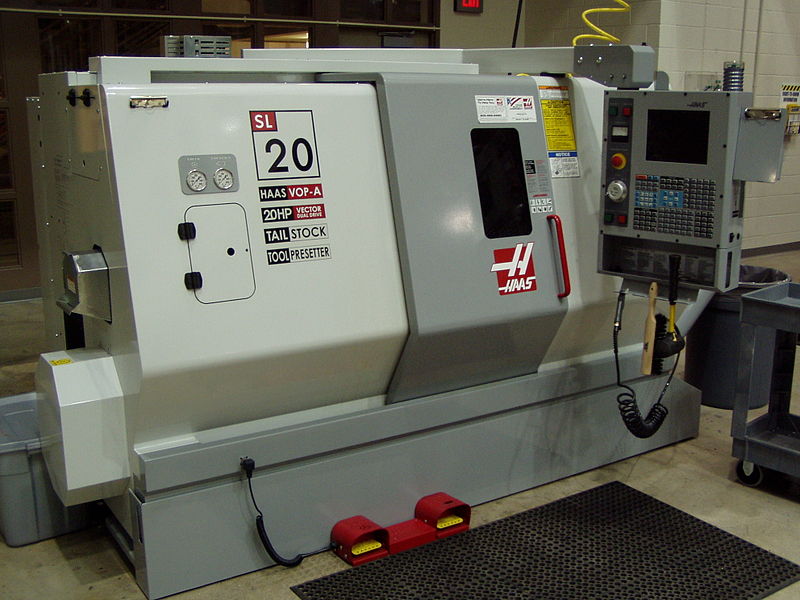

Control Architectures |
|
To gain access to revision questions, please sign up and log in.
Machines carry out a single task.
Robots can be re-programmed to carry out many different tasks.
Robotic Devices need to process inputs to make decisions and carry out actions (the outputs).
Fixed Industrial Robots - Computer Numerical Control - Reactive Control Systems
The machine has a few sensors, sufficient for a traditional computer to monitor and control the process. These robotic devices are often machine tools performing fairly simple tasks but with great precision. The program that controls the machine is a sequence of numbers that is meaningful to the machine. Closed loop negative feedback is used to ensure the accuracy of the process. The processing can be simple but unexpected events will cause the robot to halt or crash. The computing device can be a microcontroller or a traditional computer.
CAD or computer aided design programs generate the numerical machine control codes.
A Computer Numerical Control Lathe
Instead of step by step commands, the robot is given a goal and a set of methods for reaching the goal. The robot has rules which allow it to take appropriate actions based on signals from its sensors. Neural networks are often used alongside traditional computers used to process the signals. The neural network is trained and it learns how to solve the problem.
Rule-based artificially intelligent computer systems can be used. Traditional computers run the artificial intelligence software. Neural networks are widely used too. The robots are often mobile. Versions for land, sea, submarine, aircraft and even off-planet exist. Autonomous robots have to function with little or no human intervention. Huge distances mean it can take many minutes to send radio commands to an off-planet robot. The robots have awareness of their own status and position and also of their environment using data from their sensors. Un-manned spy planes need to work autonomously (without human intervention) and work properly if the weather conditions change. Intelligent processing allows robots to adapt their actions and respond in an appropriate way to unexpected events or obstacles. The robots can learn from experience.
Communicating with Mars can take up to 20 minutes (even at the speed of light) depending on the position of Mars relative to Earth.
This makes traditional remote control systems useless. They take too long to react.
It is essential that the Mars probe is more or less autonomous. Commands from Earth tell the probe what to do. Local processing decides how to achieve the task.
reviseOmatic V3 Contacts, ©, Cookies, Data Protection and Disclaimers Hosted at linode.com, London